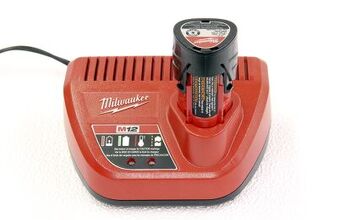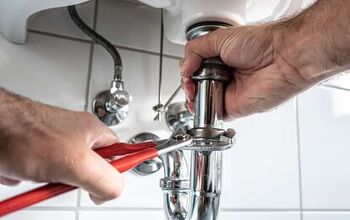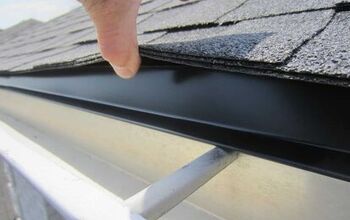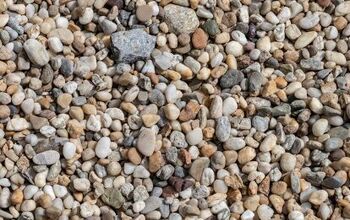When To Clean With Steel Wool (And When You Shouldn't)

Steel wool has been cleaning stubborn surface stains for over a hundred years. As the name suggests, this metallic sponge is composed of steel strands that vary in size depending on the grade you select. This product can be a lifesaver for those trying to remove tough messes and resolve specific issues. But this abrasive can also ruin many surfaces. This is why you must know when it’s wise to use steel wool and when it's not.
The best ways to use steel wool include cleaning a grill or oven grates and scrubbing burnt foods off certain sheet pans and other cookware. You can remove rust from tools, stuff holes to keep rodents out, clean filthy sneakers, and even sharpen scissors. Never use steel wool on cookware with non-stick coating, or ceramic and porcelain surfaces. Also, avoid using it on stainless steel, chrome, and glass.
Steel wool has been around for a long time for a reason — it works. It’s a cleaning abrasive that has stood the test of time. Still, there are specific circumstances when you can use steel wool, and many when you can’t. To avoid scratching and permanently damaging surfaces, keep reading. Below is a list of great uses for steel wool, as well as surfaces you should never put in contact with steel wool.
Seven Great Uses For Steel Wool In And Around The Home
1. Cleaning The Grill
Steel wool works well on tough grime. There are few filthier surfaces than the interior of a grill. If your grill is looking particularly grimy, it’s time to reach for the steel wool. This abrasive works well when there is a lot of buildup.
Steel wool works great to clean your grill hood and its interior. You can also clean the grill grates with steel wool, but if you apply too much pressure, it can scratch them. In turn, these new scratches can eventually trap food, making it harder to clean. So, use it on grates only as a last resort, and be gentle.
2. Cleaning Oven Grate
Oven grates can get coated with food that spills over, and in turn, the food can burn. It can leave black residue on oven grates that you can’t remove with a normal sponge. This is where steel wool comes in handy.
Use steel wool and a household cleaner (Soft Scrub works well). This combination should loosen up the black crust and return the original metallic shine to your oven grates. While steel wool is great for these metal racks, don’t clean the rest of your oven with it. Most ovens have a covering that would be scratched and permanently damaged by the steel strands.
3. Removing Crusted And Burnt Food From Certain Cookware
If you have tried everything to get burnt food off the bottom of a pot, skillet, or other cookware, you can give steel wool a try. While it is generally not recommended to use steel wool on stainless steel or coated ceramic, it can be used on some cookware.
You can use steel wool on some enamel cookware and other metals, but usually as a last resort for the most stubborn messes. Remember to use a fine grade steel wool, and one that is least likely to leave noticeable scratches.
4. Scrubbing Rusty Tools And Appliances
If you’ve left tools outside or haven’t cleaned them in a while, there’s a good chance they might be rusty. Steel wool is highly effective at removing layers of rust from tools. You can use either fine or medium grade steel wool for this task.
For best results, first spray the rusty tools with WD40 and allow it to penetrate. This will make the process faster and more effective.
5. Give Dirty Sneakers A New Life
If you have sneakers that you’ve put through endless walks through mud and dirt, you might think the only solution is to throw them away. If the problem with the shoes is mud and dirt stains, particularly on the rubber soles, then try cleaning them with steel wool.
Use ultra-fine grade steel wool (like #0000 grade) on your stained sneakers. You can use this grade of steel wool to remove scuff marks and scratches from shoes. It works on white sneakers, or any sneakers that don’t have painted soles, as the paint will rub away when using steel wool.
6. Use It As A Barrier For Rodents And Other Pests
In addition to cleaning various surfaces, you can use steel wool to help keep rodents away. If you are trying to keep rodents and other pests out of your home, steel wool can be very helpful. First, identify any potential entry point, like large gaps or holes that rodents have formed in the past. Fill these gaps with steel wool, and then cover them with wood, caulk, plaster, or what you see fit to cover it. Rodents can chew through wood, but steel wool will ruin their teeth and often prove impossible to break through.
7. Sharpen Your Scissors
Steel wool can even be used as a sharpener. It is particularly effective at sharpening scissors, which are otherwise quite challenging to sharpen at home. The sharpening process is also quite easy. To sharpen scissors, continuously cut through thin pieces of steel wool. After many cuts, the scissors will form a new and sharper blade.
Nine Materials You Should Never Clean With Steel Wool
1. Glass
While some people use extra fine grade steel wool on tempered glass to remove paint, it is never a good idea to use it on glass. Even ultra-fine steel wool can scratch and permanently damage glass. This goes for cookware, mirrors, and windows.
2. Porcelain-Glazed Ceramics
Never use steel wool to clean your glazed ceramic dishware, cookware, or floors. Even if there are stubborn stains, find a different solution. The same goes for porcelain. This includes sinks, toilets, and other porcelain appliances. Steel wool can easily scratch these surfaces.
3. Chrome And Polished Metal
Chrome needs to be polished, but you shouldn’t use steel wool to do it. Chrome is shiny because it has a polished surface. Steel wool can leave easy-to-notice scratches on the surface of chrome and other polished metal surfaces.
4. Marble And Granite Countertops
Another polished surface you should never use steel wool on is your granite and marble countertops. These stone surfaces might be strong and durable, but the polished surface is more vulnerable than you might think. Steel wool can leave noticeable scuff marks on your shiny countertops.
5. Non-Stick Cookware
Non-stick cookware is normally easy to clean. If you burn food on your non-stick sheet pans or pans, don’t use steel wool to clean them. Even the finest grade steel wool can damage and strip the cookware of its non-stick coating. Use a more delicate sponge instead.
6. Plastics
Plastics are soft and pliable. Therefore, steel wool will quickly scratch and permanently damage plastic surfaces. Even plastic cutting boards shouldn’t be exposed to steel wool. Use a less abrasive cleaning tool on your plastic items.
7. Soft And Untreated Wood
Untreated wood and even treated softer woods can also be negatively affected by steel wool. Steel wool acts like a more abrasive sandpaper on wooden surfaces and causes noticeable scratches. It will also damage any lacquer or stain on the wood.
8. Stainless Steel
You might think there’s nothing wrong with using steel wool on stainless steel. They are, after all, both made of steel. The problem is that steel wool can scratch the surface of stainless steel. The scratches often penetrate beneath the surface. This can eventually lead to your stainless steel being more susceptible to rust.
9. Cast Iron Skillet
Cast iron is durable and heavy. This doesn’t mean you should use a strong abrasive like steel wool on your cast iron skillet. Steel wool can penetrate deeply, which can ruin the layer of seasoning that you want on your cast iron pan.
Wrapping Up When You Should (And Shouldn’t) Use Steel Wool
Steel wool is an effective abrasive that has versatile uses around the home. You can use it to clean inside your grill or the grates in your oven. Use fine steel wool to give old sneakers a new life. You can even use it to patch up holes to keep rodents out of your home or polish dull scissors.
While steel wool is versatile, never use it to clean porcelain, glazed ceramic, stone countertops, non-stick cookware, plastic, glass, or stainless steel.
Related Guides:
- Pros And Cons Of Hard Anodized Cookware
- How Do I Know When It’s Time To Clean My Oven?
- How To Make Cast Iron Stovetop Grates Look New (Do This!)

Tom Gaffey is an expert writer who currently resides in Washington D.C. Tom has a passion for real estate and home improvement writing, as well as travel and lifestyle writing. He lived the last twelve years in Hawaii where he worked closely with luxury resorts and event planners, mastering his knowledge of aesthetics and luxury products. This is where he found his passion for home improvement and a keen interest in DIY projects. Currently, Tom resides in Washington D.C, and also working on his debut fiction novel.
More by Tom Gaffey










![10 Best Electric Pressure Washers – [2022 Reviews & Guide]](https://cdn-fastly.upgradedhome.com/media/2023/07/31/9070600/10-best-electric-pressure-washers-2022-reviews-guide.jpg?size=350x220)






![12 Washing Machine Brands to Avoid [with Recall Data]](https://cdn-fastly.upgradedhome.com/media/2023/07/31/9075781/12-washing-machine-brands-to-avoid-with-recall-data.jpg?size=350x220)









